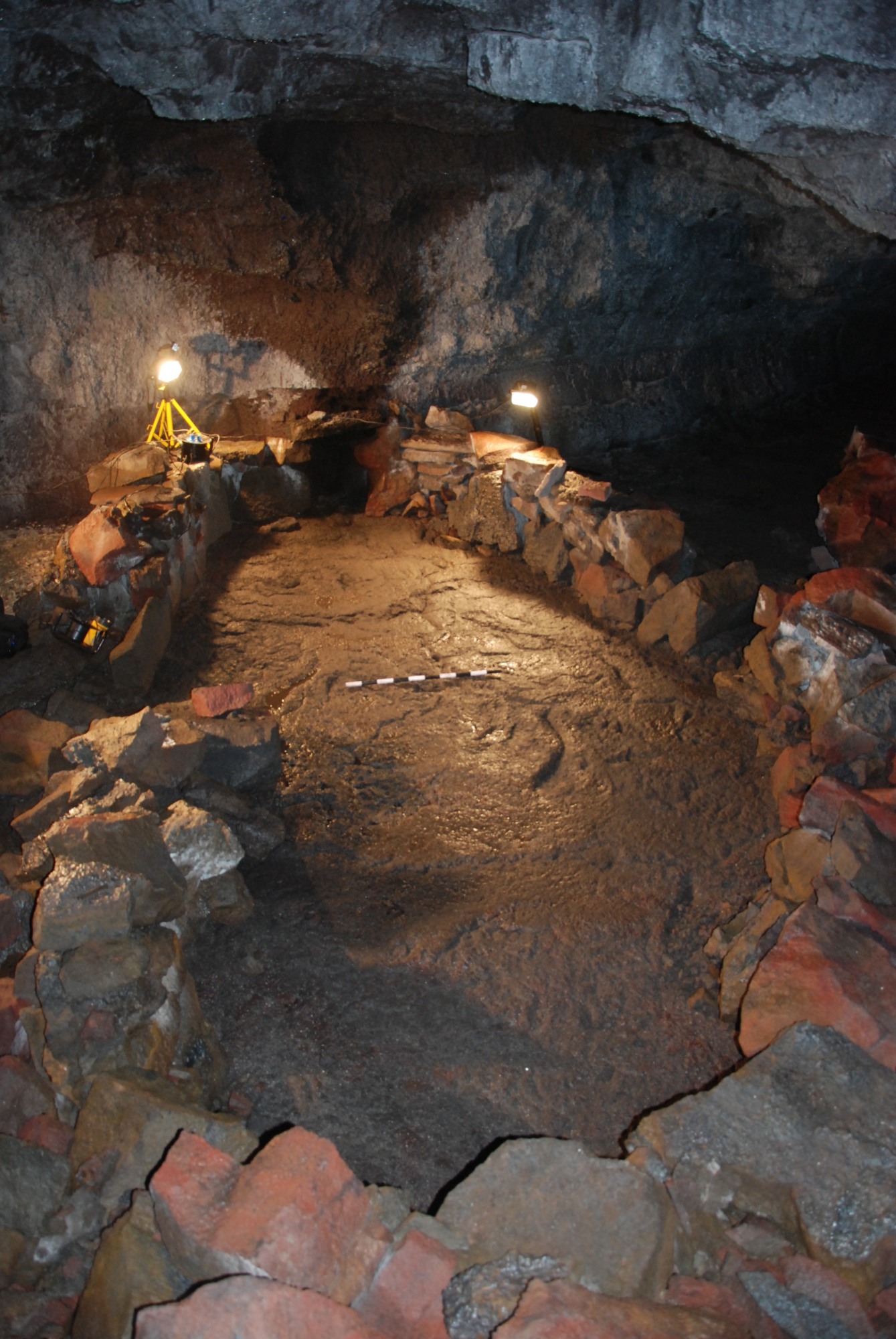 Smith’s fieldwork was funded by the National Science Foundation in 2012-2013. The fieldwork conducted by Smith and a small international crew of researchers transformed the current understanding of the cave and its alternate medieval origin stories.
Smith’s fieldwork was funded by the National Science Foundation in 2012-2013. The fieldwork conducted by Smith and a small international crew of researchers transformed the current understanding of the cave and its alternate medieval origin stories.
Statistical analyses of 22 radiocarbon dates, a dated volcanic ash layer, and medieval references to the site allowed Smith and his Icelandic co-authors to show that the cave formed in an eruption that began in the late 9th century CE, almost immediately after the first Viking settlers arrived in Iceland. The eruption eventually covered 240 square kilometers (90 square miles) of once fertile land beneath burning black basalt and was almost certainly the first major volcanic eruption directly witnessed by anyone in northern Europe since the end of the last Ice Age, 13,000 years ago. When it ended, the Vikings entered the cave, which they named “the cave of Surtr" after a figure in Norse mythology who was present at the creation of the world and would kill the last of the gods in Ragnarök before destroying the world. There, almost 900 feet (300 meters) into the cave’s total darkness and 30 feet (10 meters) beneath the earth’s surface, Smith’s team documented a vast underground Viking Age site. The bones of domestic animals were deposited in piles stretching nearly 400 feet (120 meters) through the cave from a boat-shaped stone structure where bones were burned and offerings were laid.
“Our analyses indicate that these activities continued, perhaps as annual sacrificial rituals, for at least 60-80 years until Iceland converted to Christianity” explained Smith, “and the objects left behind in the cave imply that they were conducted by members of Iceland's elite. Some of those objects include orpiment (an arsenic ore pigment) that came from as far away as eastern Turkey and beads from as far as Baghdad.”
The Journal of Archaeological Science has shared a link to the digital paper, which is available for free downloads and examination until April 21st, 2021. Smith says that this paper represents the first in a series of publications about the cave and its unique insights into Viking Age ritual, religion, and responses to catastrophic volcanism. The Surtshellir Archaeological Project has a Facebook page for those interested in updates as the project moves forward.